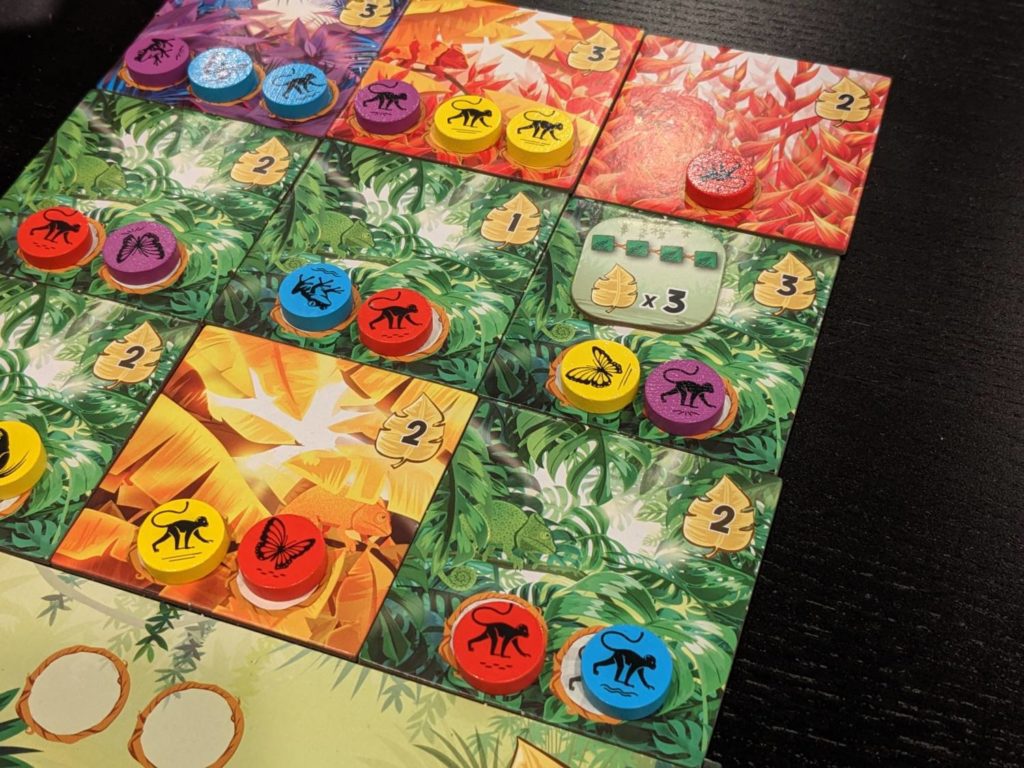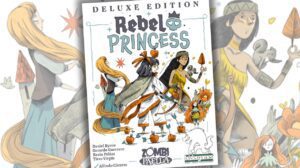Disclosure: Meeple Mountain received a free copy of this product in exchange for an honest, unbiased review. This review is not intended to be an endorsement.
Sometimes, our writing team—myself included—like to tease what we are thinking about a game before a big reveal in the closing paragraphs that celebrates the magic of the review process.
Not today. Rainforest is just good, plain, easy-to-learn yet difficult-to-master family fun that can be set up, played, and cleared from the table in about 30 minutes. That means it’s been fun for all four members of my family, and even when the team at Funnyfox showed me Rainforest during a meeting at SPIEL ‘22, I knew I was going to like it. My kids keep asking to play it, my wife—a woman who can be very difficult to impress—really liked her plays, and I just adore how simple this is to teach to a stranger while crunching over the puzzle of how to score the most points.
Why can’t more games just be simple fun?

It’s a Jungle Out There
Rainforest takes place in the jungle. Well, with a board, tiles, and a totem animal. On your kitchen table. Otherwise, in the jungle.
In front of you, options are limited. You’ll be asked to take one of five available tiles, with spots on your player board ready to accept circular wooden discs in one of five colors and four different animal types. First, you must place the tile below your player board—there’s room for three—then, you’ll take at least one of the circular discs from the tile’s space to add to your queue.
You can take either all of one color of the discs in that area, or all of one animal type. Then, you can place the discs on your tiles. If any tile’s disc spots are now full, move the tile into your 3×3 grid above your player board.
And that’s it. Each player scores more points for the totem animal listed on their player board, driving them towards grabbing, say, more monkeys or parrots versus that frog disc you are hunting for. Bonus tiles are available that trigger bonuses if you can orthogonally connect tiles of a certain color in your 3×3 grid, and you can score a diversity bonus if you add a tile of each of the five colors to your tableau; that diversity bonus scores more points the earlier it is earned.
When someone builds their ninth tile, that triggers the final round, and all players get equal turns.

Yep
Kids love it. Wives love it. Friends love it. I love it.
You could teach this to your grandparents. I taught it to my newly-minted six-year-old. Gamers will like the puzzle. Non-gamers will like the parrots. Everyone will love that Rainforest doesn’t overstay its welcome. Rainforest just works.
It’s not the sexiest production. The animals are fine, but not special; the player boards do just enough, nothing more. Rainforest has a rulebook that is probably double the length it needs to be. I don’t think the game has long legs, so I could see this hitting the table five, maybe six times, but it’s hard to imagine it becoming a staple in the Bell household.
All good. Rainforest is in that sweet spot of a gift for gamers of the now (at least, for our European readers, since this one won’t be coming to the US). You can send this to a friend, they’ll play it a few times, then move it on to another friend. They’ll thank you for your gaming recommendations, then you’ll send me a note thanking me, then I’ll thank the publisher. It’s the circle of life, friends! Now get to the jungle!











Add Comment